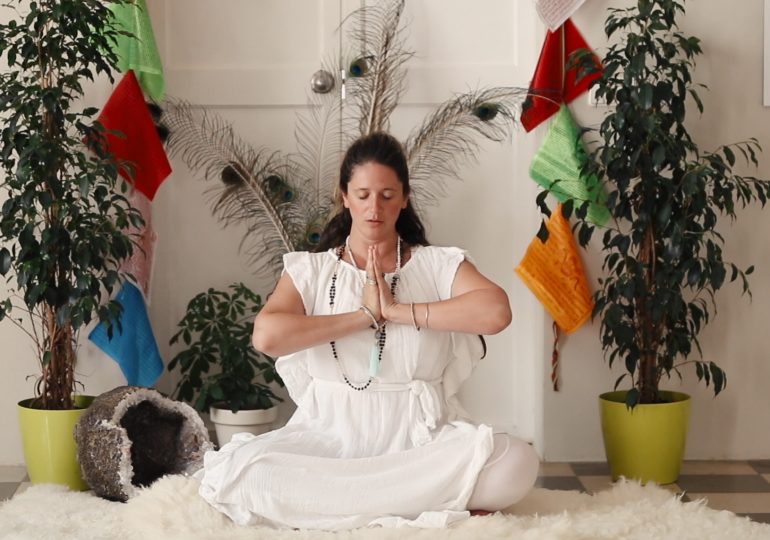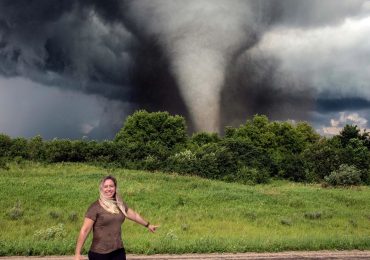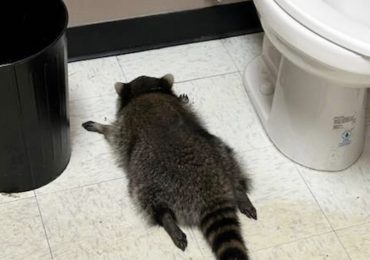A new documentary series, Breath of Fire, focuses on the rise and sudden fall of a Kundalini yoga teacher known as Guru Jagat, whose story was brought to wider attention in journalist Haley Phelan’s 2021Vanity Fair story “The Second Coming of Guru Jagat.”
The four-episode series, premiering Oct. 23 on HBO, expands on the Vanity Fair piece by bringing together, on camera, friends, family, and former employees of Jagat and Kundalini yogis, who practice across a range of levels, to talk about who Guru Jagat really was as a person and the irony of her yoga business, which aimed to help people succeed in business, struggling to make ends meet.
[time-brightcove not-tgx=”true”]
Breath of Fire comes three years after Jagat, who was born Katie Griggs, died suddenly of cardiac arrest at the age of 41. But her friends and family do not hold back in Breath of Fire. As her own mother, Nansy Steinhorn-Galloway, says: “I mean it’s hard to think of her as a cult leader, but what else would you call her?”
Kundalini yoga, explained
Of the many different ways to practice yoga, Kundalini yoga is considered to be on the fringe.
“If yoga is like a tree, Kundalini is kind of like a wayward branch off of that tree,” says Philip Deslippe, an expert history of yoga and a doctoral candidate in department of religious studies at the University of California, Santa Barbara, who is featured in the series.
Kundalini yoga is focused on calisthenic movements, breath work, and chanting. “Kundalini is kind of like a weird hodgepodge of different exercises, so it can be very different from one class to the next,” Deslippe explains, “whereas, there’s kind of more of a regularity from one Hatha yoga class to the next.”
Kundalini yoga is the brainchild of customs officer-turned-yoga teacher Harbhajan Singh Khalsa, who called himself Yogi Bhajan, the “Supreme Religious and Administrative Authority of the Sikh Religion in the Western Hemisphere,” according to a 1977 TIME report that noted there were 110 “ashrams,” communes with a spiritual focus, of his followers worldwide. Today, his business is best known for creating Yogi Tea.
A promoter of vegetarianism and meditation, Yogi Bhajan was in the right place at the right time, striking a chord with the values of the counterculture movement. As Deslippe puts it, what Yogi Bhajan did was “read all of the hippies around him and quickly adapt and pitch himself as the yoga guru that they’re hoping for. So he cobbles together various things into what he calls Kundalini yoga.”
Guru Jagat’s rise to fame
How did Katie Griggs, born on a Colorado farm in 1979, become “Guru Jagat,” one of the most popular yogis of all-time?
Jagat had been looking for spiritual alternatives to rehab during a very dark place in her life. She had been raped in college, and the trauma led to drug and alcohol abuse. Breath of Fire features a clip of Jagat talking about how she got into Kundalini yoga. “I was healing from addiction, from heartbreak,” she says.
According to the series, Jagat began to view her Kundalini yoga teacher, Harijiwan—who learned Kundalini yoga from Yogi Bhajan—as a father figure. Her biological father left when she was a year old.
“She spent the rest of her life looking for a father and a spiritual mentor,” her mother, Steinhorn-Galloway, says in the docu-series.
Her step-father Rabbit Galloway adds, “the daddy issue thing allowed [Harijiwan] to infiltrate more into her psyche…If you know somebody has a trauma around a subject like daddy, you can use that to exploit that person. And I think that’s what took place.”
It’s not clear when Jagat started to practice with Harijiwan, but by 2011, she was trying to make a name for herself in his world, calling herself “Kundalini Katie.” Friends noticed that she had begun wearing a turban. In 2012, she started going by Guru Jagat publicly and in 2013, she founded a yoga studio called Ra Ma Los Angeles. Sister studios subsequently opened in cities like Boulder, New York, and Mallorca. At the height of her Kundalini yoga career, Jagat’s classes drew in celebrities like Christy Turlington, Russell Brand, and Alicia Keys.
Phelan, who interviewed several associates of Jagat, says she became Harijiwan’s face for what he saw as the future of yoga.
“Harijiwan was casting about for a young female face to help him start a yoga studio and kind of build his profile up, and I think he knew that as a middle aged white guy, he wasn’t the one to kind of front this new venture,” Phelan says in Breath of Fire. “I think that he wanted a girl because he could see that that was where the yoga industry was going and that was where wellness was going.”
According to Deslippe, Jagat was able to successfully use social media to build a following of mostly young women focused on self-help, who felt unfulfilled in their lives, in terms of money, their relationships, and their jobs. One of its bestselling programs was its business school, virtual workshops in which Guru Jagat would give spiritual advice geared towards people trying to climb the corporate ladder.
Jagat was also an early adopter of Instagram, where she would always post snippets from her classes, which could be streamed online to paying subscribers. Clips of her rocking out to music made her seem relatable and garnered gushing comments from fans.
Guru Jagat’s fall from grace
Kundalini yoga has been controversial for as long as it has existed. In 1977, TIME reported that Bhajan’s supporters viewed the founder as “the holiest man of this era,” while “opponents denounce him as a charlatan and a heretic.”
Bhajan faced accusations of rape and sexual misconduct before his death in 2004, but the allegations did not gain wider attention until after the #MeToo movement in 2017.
In 2020, Pamela Dyson, a former lover and employee of Bhajan, wrote in her memoir that Bhajan made her have an abortion when he found out she was carrying his child. Her account inspired other followers to come forward with allegations of abuse. In the docuseries, Mahan Kirn Khalsa, who was born in a Kundalini ashram, talks about how she was raped by Bhajan, yet is determined not to be defined by that trauma. “It felt good just to say it,” she says in the doc, “just to say those words, what took me so long—25 years—it was OK because I was free.” She continues to teach yoga and got married and started a family.
As allegations against Bhajan came to light, “it created a crisis among everyone who practiced Kundalini yoga,” says Deslippe. Harijiwan, Guru Jagat, and every Kundalini yoga teacher had to field questions and scrutiny. Followers of Jagat began to lose their confidence in her when she cast doubt on the sexual abuse survivors by defending Bhajan online. Phelan writes in Vanity Fair that Jagat shared a video that dismissed Dyson’s story on Instagram and captioned it, “This tale is no truer than any other tale—the Truth as always lies in the eye of the Beholder.” Nicole Norton, who had been Guru Jagat’s personal assistant, talks in the series about the irony of Jagat preaching feminism, but telling her employees of her yoga studio to post messages of support for controversial figures like Bhajan.
The post angered Jagat’s employees, who began speaking out anonymously online about their toxic work environment. Former employees talk about their experiences in Breath of Fire, saying they were paid less than minimum wage while Jagat navigated financial difficulties with the studio. One of her desperate attempts to raise money involved offering potential followers a mentorship with Jagat—at the price of around $20,000—which required filling out an application that asked intrusive questions about applicants’ relationship with food. During the COVID-19 pandemic, Jagat started promoting COVID denialism and anti-masking conspiracy theories.
But before there could be a real reckoning, Guru Jagat died suddenly of a heart attack on Aug. 1, 2021, at the age of 41. She suffered a pulmonary embolism following an ankle surgery. Ra Ma had just celebrated eight years in business, with a website that boasted about 2 million unique visitors a month and 20,000 online subscribers. It still exists today.
Leave a comment








